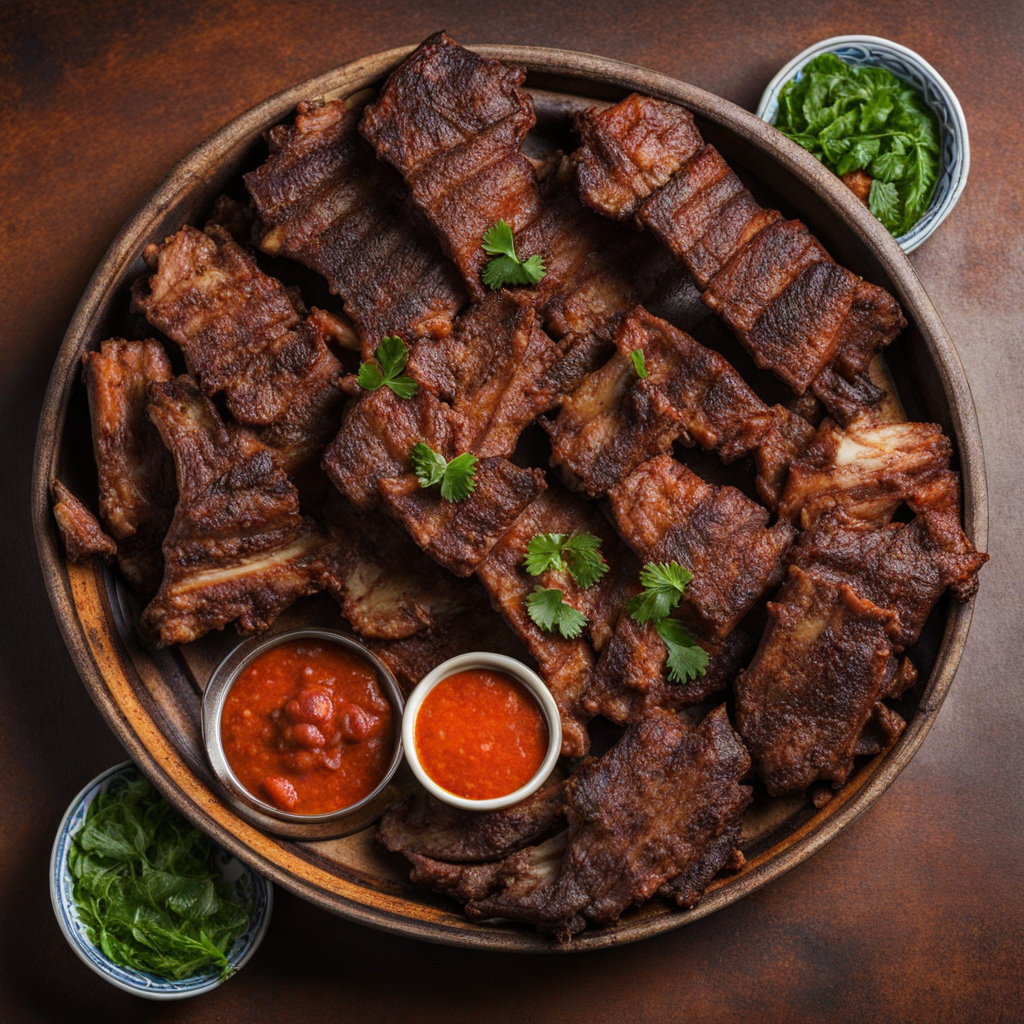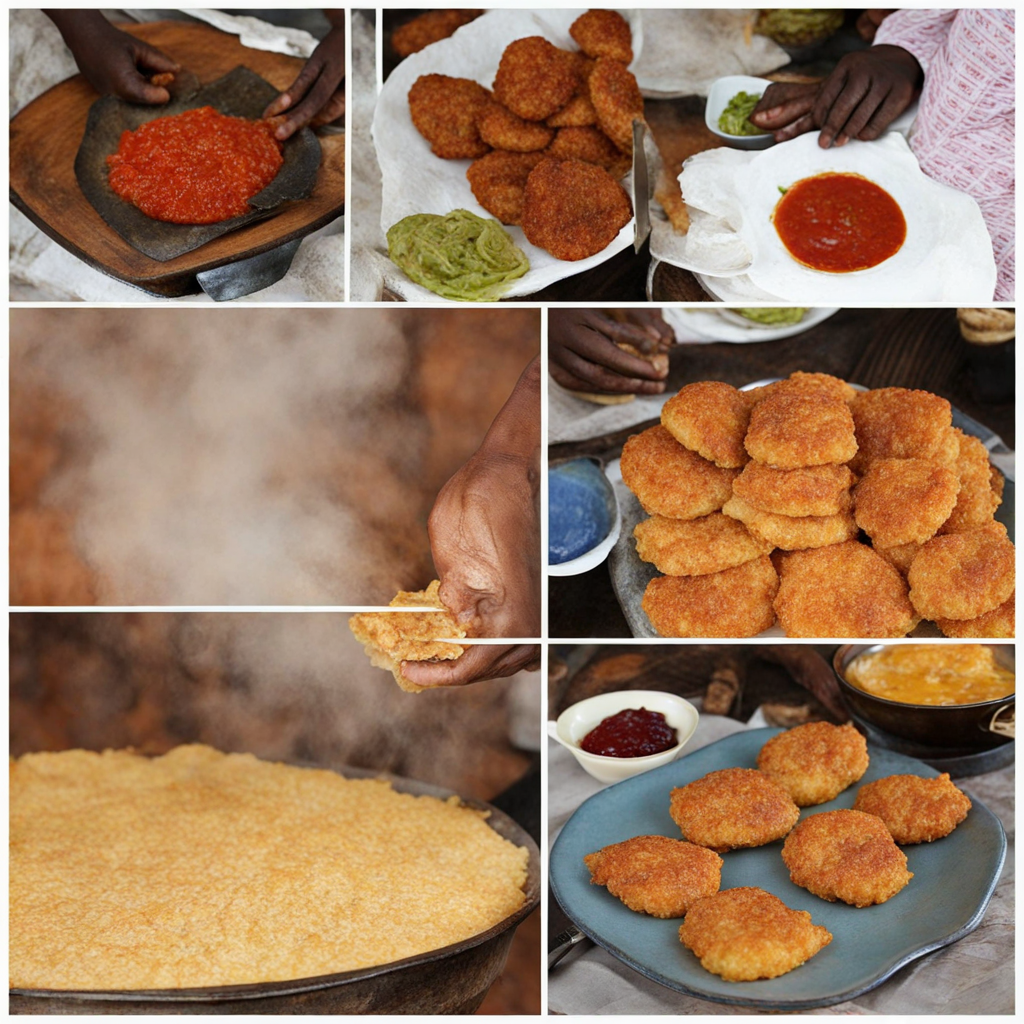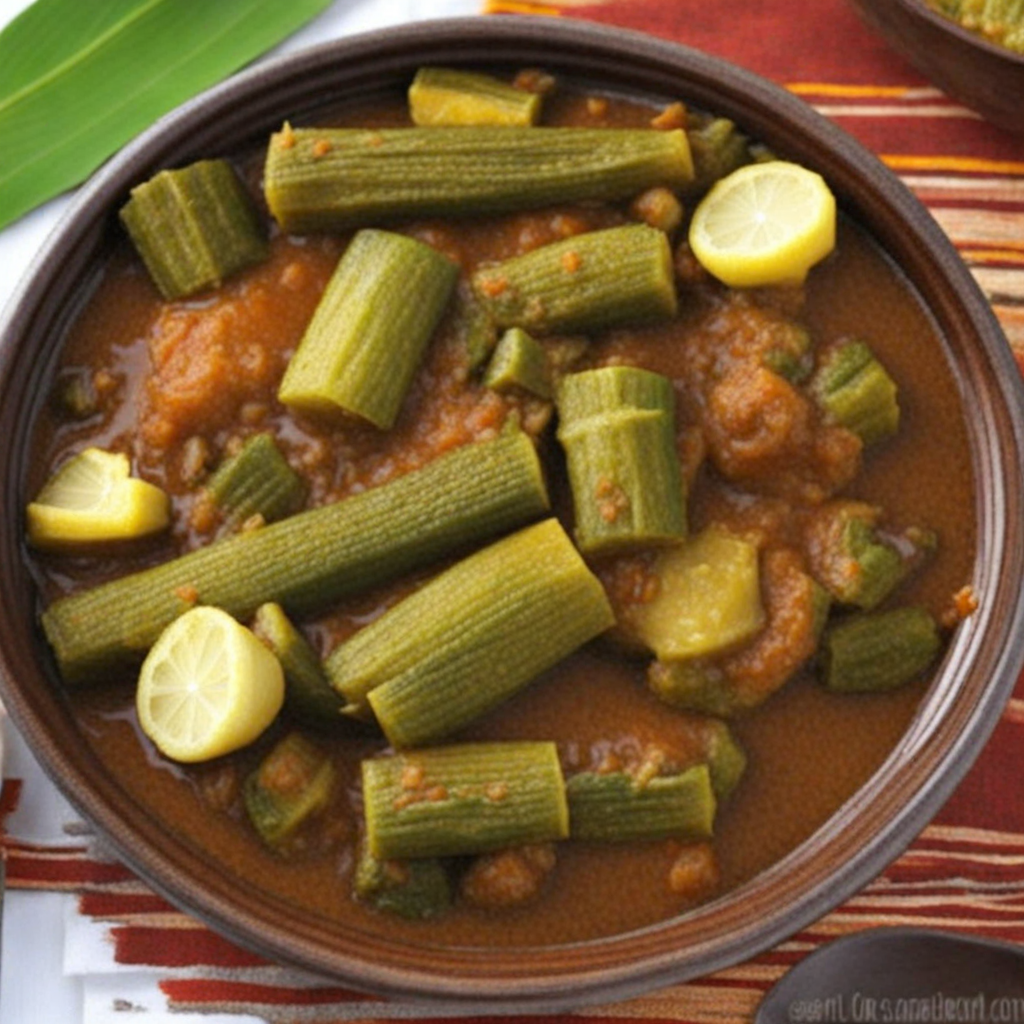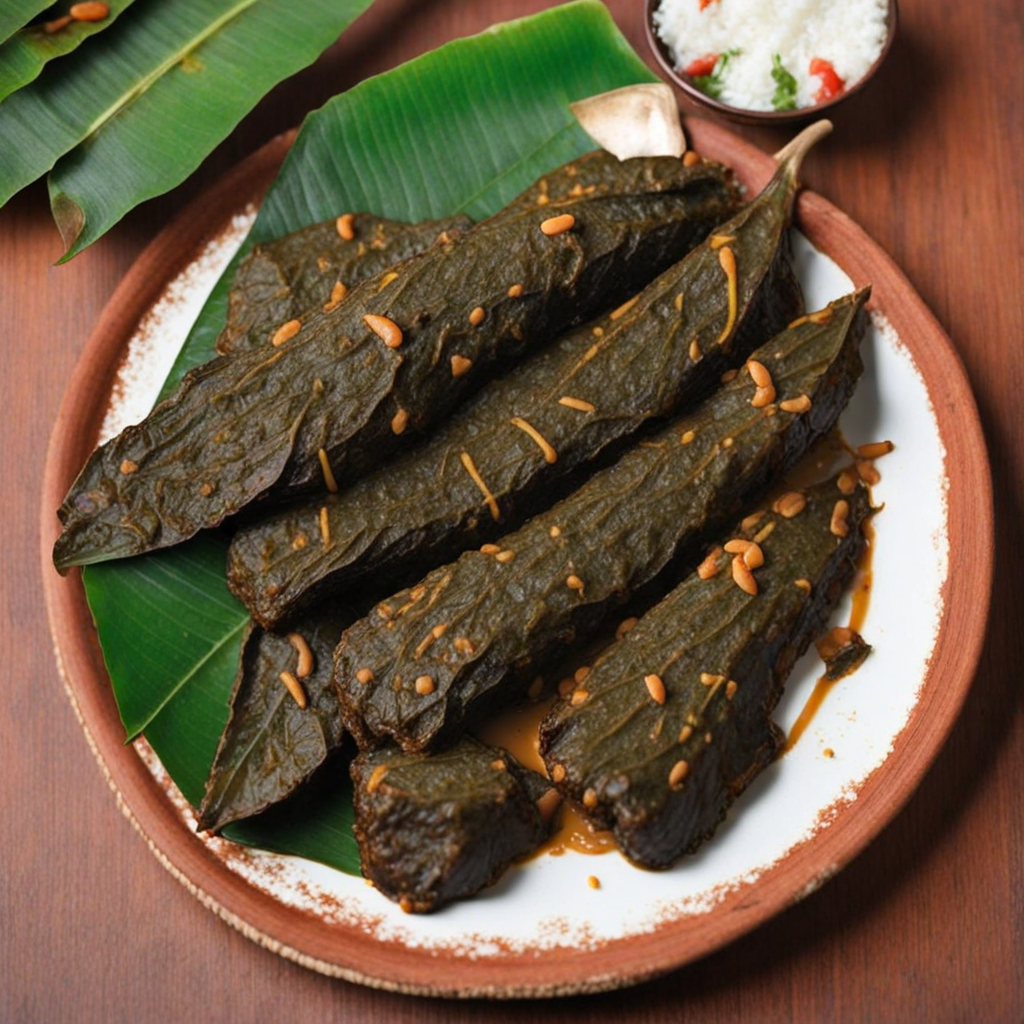Ntaba
Ntaba is a traditional Congolese dish that showcases the rich culinary traditions of the Democratic Republic of the Congo. This savory delight primarily consists of goat meat, which is marinated with an array of spices and herbs to enhance its natural flavors. The meat is often slow-cooked, allowing it to become tender and infused with the aromatic spices. The use of local ingredients such as ginger, garlic, and chili peppers adds depth and warmth, making it a comforting meal that's perfect for family gatherings or special occasions. Accompanying the goat meat, Ntaba is typically served with a side of cassava or plantains, which are staples in Congolese cuisine. These starchy sides not only balance the dish but also provide a satisfying texture that complements the tender meat. The combination of the rich, spiced meat and the mild, earthy flavors of cassava creates a harmonious blend that is both filling and delicious. Additionally, some variations may include a rich, savory sauce made from ground peanuts or palm oil, adding a nutty depth to the overall dish. What makes Ntaba particularly special is the communal aspect of sharing the meal, often enjoyed during gatherings with friends and family. The dish is typically served on a large platter, encouraging everyone to dig in together, fostering a sense of connection and joy. Each bite of Ntaba offers a taste of Congolese culture, with its bold flavors and hearty ingredients reflecting the warmth and hospitality of its people. For those looking to explore new culinary landscapes, Ntaba promises an unforgettable experience that tantalizes the palate and warms the heart.
How It Became This Dish
The Culinary Journey of Ntaba: A Congolese Delight #### Origins and Early History Ntaba, a dish deeply rooted in the culinary traditions of the Democratic Republic of the Congo (DRC), can be traced back to the pre-colonial era when local tribes thrived on the banks of the Congo River and in the lush rainforests that blanket the country. The word "ntaba" translates to "meat" in several local languages, primarily Lingala and Kikongo, and reflects the dish's primary ingredient: goat or sheep meat. Historically, the Congolese relied on their agricultural and pastoral practices to sustain their communities. Livestock, especially goats and sheep, were not only a source of food but also represented wealth and social status. Ntaba quickly became a staple at communal gatherings, celebrations, and significant life events, such as weddings and harvest festivals. The preparation of ntaba was often a communal affair, where families would come together to slaughter the animal and prepare the meal, reinforcing social bonds and cultural identity. #### Ingredients and Preparation The basic preparation of ntaba involves marinating the meat in a blend of spices and ingredients native to the region. Common seasonings include garlic, ginger, and local chili peppers, which add depth and heat to the dish. Sometimes, palm oil and groundnut paste are used to create a rich sauce that complements the meat. Cooking methods reflect the resourcefulness of the Congolese people. In rural areas, ntaba is often grilled over an open flame, imparting a smoky flavor that enhances the dish's appeal. In more urban settings, it may be prepared in a pot or skillet, stewed with vegetables such as cassava leaves, tomatoes, and okra. Accompaniments to ntaba vary by region but may include staple foods such as fufu (a starchy side made from cassava or plantains) or rice. The combination of ntaba and these sides creates a hearty meal that symbolizes abundance and hospitality. #### Cultural Significance Ntaba holds immense cultural significance in Congolese society. It is not merely a meal but a symbol of community and togetherness. The preparation and consumption of ntaba often coincide with significant cultural practices, such as rites of passage, family reunions, and festivals. During the traditional ceremonies, ntaba is presented as a gesture of goodwill and generosity, embodying the spirit of sharing and unity among participants. In the context of Congolese spirituality, the act of sharing food, especially a dish like ntaba, is considered a way to honor ancestors and forge connections with the spiritual world. The communal aspect of preparing and consuming ntaba is believed to strengthen bonds not only among the living but also with those who have passed, underscoring the importance of family and heritage in Congolese culture. #### Colonial Influence and Adaptation The arrival of European colonial powers in the late 19th century introduced significant changes to the social and culinary landscapes of the DRC. The imposition of foreign agricultural practices and the exploitation of local resources disrupted traditional ways of life. However, the resilience of the Congolese people allowed dishes like ntaba to adapt and evolve. As colonial administrators and missionaries introduced new ingredients and cooking techniques, ntaba began to incorporate influences from various cultures. The introduction of imported spices and condiments, such as soy sauce and tomato paste, transformed the flavor profiles of traditional dishes. Additionally, the expansion of trade routes facilitated the exchange of culinary knowledge, allowing ntaba to absorb elements from neighboring countries, including Angola and the Central African Republic. Despite these adaptations, ntaba retained its core identity. It continued to serve as a cornerstone of Congolese cuisine, symbolizing the endurance of cultural practices in the face of external pressures. The dish became a source of pride for the Congolese, representing their ability to preserve their culinary heritage while embracing new influences. #### Modern Revival and Global Recognition In recent years, there has been a resurgence of interest in traditional Congolese cuisine, including ntaba. This revival can be attributed to various factors, including the global movement towards authentic, locally sourced foods and the efforts of the Congolese diaspora to share their culinary heritage with the world. As Congolese immigrants settle in different parts of the globe, they bring their culinary traditions with them, introducing dishes like ntaba to new audiences. The rise of social media has played a significant role in this cultural revival. Food bloggers and influencers from the Congolese community have taken to platforms like Instagram and TikTok to showcase their culinary skills, sharing recipes and cooking techniques that highlight the beauty and richness of Congolese cuisine. As a result, ntaba has gained recognition beyond the borders of the DRC, inspiring chefs and food enthusiasts worldwide to explore its flavors and significance. In urban centers across the globe, Congolese restaurants have emerged, offering traditional dishes like ntaba to diverse clientele. These establishments not only serve as dining venues but also as cultural hubs, where diners can experience Congolese hospitality and learn about the rich history behind each dish. The popularity of ntaba in these settings reinforces its status as a symbol of cultural identity and pride for the Congolese people. #### Conclusion The history of ntaba is a testament to the resilience and adaptability of Congolese culinary traditions. From its origins in pre-colonial society to its modern-day revival, ntaba serves as a bridge connecting generations and cultures. It embodies the spirit of community, hospitality, and the enduring significance of sharing food as a means of fostering connections. As the world becomes increasingly interconnected, the appreciation for diverse culinary traditions, such as ntaba, continues to grow. This Congolese delicacy not only nourishes the body but also offers a glimpse into the rich tapestry of culture, history, and identity that defines the Democratic Republic of the Congo. Through the lens of ntaba, we celebrate the power of food to unite, inspire, and preserve the essence of a people’s heritage.
You may like
Discover local flavors from Congo







